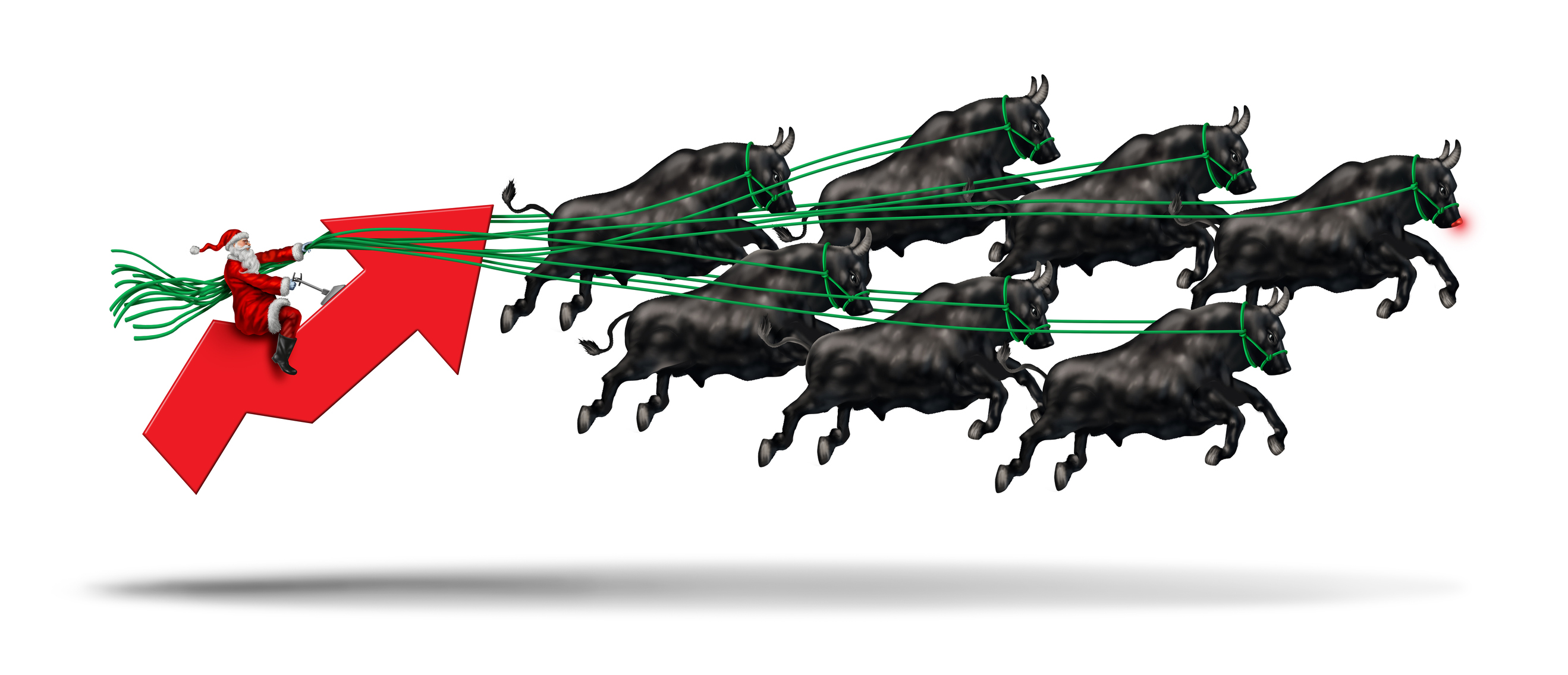Use Dividend Stocks to Dial Down Your Market Worries
If you’re worried that stock records won’t last, the boost that dividend stocks provides over the long term could be a calming cushion.


While most investors are publicly celebrating this record-setting bull market, many tell me in private that they’re nervous about the possibility of a downturn.
People have different reactions when the market does so well for so long. Some are sure they should get out, but greed won’t let them pull the plug. Others are eager to get in on the action, but fear won’t let them pull the trigger.
I tell clients to base their decisions on their long-term plan, not what’s happening day to day. Staying on a steady course is always key in investing, but especially in uncertain times.
From just $107.88 $24.99 for Kiplinger Personal Finance
Become a smarter, better informed investor. Subscribe from just $107.88 $24.99, plus get up to 4 Special Issues

Sign up for Kiplinger’s Free Newsletters
Profit and prosper with the best of expert advice on investing, taxes, retirement, personal finance and more - straight to your e-mail.
Profit and prosper with the best of expert advice - straight to your e-mail.
One of my favorite ways to add some stability to a portfolio is with a thoughtful dividend strategy — especially if you can reinvest those dividends instead of taking them as income.
What’s the payoff for patience?
Let’s hypothetically say you had put $10,000 in an investment that perfectly matched the S&P 500 at the end of 1960. If you had taken the dividends as cash and not reinvested them, at the end of 2015, your $10,000 would have grown to $351,000.
Not bad. But if you’d reinvested those dividends, you’d have just shy of $1.9 million.
Jaw-dropping, right?
Now, you may not be able to wait 55 years, but even 10, 20 or 30 years could bring you some pleasing results.
And the thing is that most folks, if they’re still working and earning a paycheck, don’t need that dividend income. Oh, it might pay for a vacation every couple of years or so. But if you can keep your hands off and reinvest it, there’s a good chance you’ll see exponential growth. It’s one of the easiest and least expensive ways to increase your holdings over time.
And even after you retire, you may choose to continue growing those investments as you pull from other income streams.
There are various way to handle reinvesting:
- You can enroll in a dividend reinvestment plan (DRIP).
- You can buy a low-cost fund that automatically reinvests distributions for you.
- Or you can stockpile the cash until you decide to make a purchase on your own. (I’d avoid the third option unless you are both market savvy and extremely disciplined.)
Keep in mind that, no matter which method you choose, this is a slow process. You’re not looking for the next big thing, and you want to stay far away from the big thing that’s almost over.
Don’t make the mistake of simply choosing stocks that offer the highest yields possible. Over time, those stocks have not performed as well as those that pay high, but not the very highest, levels of dividends. Why? Sometimes a company will declare dividends to grab investor interest and boost share price, but then it can’t sustain those payments. And if there’s a dividend cut, the market might read that as a sign of weakness.
Look, instead, for stable, well-run companies that pay constant or rising dividends — companies that are going to be here for a while. For example, iconic American brands, even though they may be in mature industries, can be terrific investments. I’m pretty confident we’ll be eating at our favorite fast-food restaurants, drinking popular soft drinks and using those brand-name laundry detergents for years to come.
But do your homework, because even consistent dividend payers can develop problems.
Talk to your financial professional about how dividend stocks might work in your portfolio. Be sure to ask about tax consequences (good and bad) and how your strategy might affect your overall retirement plan.
Most important: Know thyself.
If you are a patient, careful investor, dividend stocks may be just the thing to help take your market anxiety down a notch.
Kim Franke-Folstad contributed to this article.
Profit and prosper with the best of Kiplinger's advice on investing, taxes, retirement, personal finance and much more. Delivered daily. Enter your email in the box and click Sign Me Up.

Michael R. Andersen is the founder and president of Andersen Wealth Management, a Registered Investment Adviser. He is an Investment Adviser Representative and a licensed fiduciary. A firm believer in financial education, Andersen holds regular informational seminars for clients and the community, and he is the host of the "Wise Money" radio show.
-
 The Santa Claus Rally Officially Begins: Stock Market Today
The Santa Claus Rally Officially Begins: Stock Market TodayThe Santa Claus Rally is officially on as of Wednesday's closing bell, and initial returns are positive.
-
 How to Leave Different Amounts to Adult Children Without Causing a Rift
How to Leave Different Amounts to Adult Children Without Causing a RiftHere’s how to leave different amounts to adult children without causing a family rift.
-
 My Retirement Learning Curve, 1 Year In
My Retirement Learning Curve, 1 Year InA retiree checks in with what they wish they knew early on and what they've changed about their plan one year in.
-
 Introducing Your CD's Edgier Cousin: The Market-Linked CD
Introducing Your CD's Edgier Cousin: The Market-Linked CDTraditional CDs are a safe option for savers, but they don't always beat inflation. Should you try their counterparts, market-linked CDs, for better returns?
-
 How to Protect Yourself and Others From a Troubled Adult Child: A Lesson from Real Life
How to Protect Yourself and Others From a Troubled Adult Child: A Lesson from Real LifeThis case of a violent adult son whose parents are in denial is an example of the extreme risks some parents face if they neglect essential safety precautions.
-
 To Build Client Relationships That Last, Embrace Simplicity
To Build Client Relationships That Last, Embrace SimplicityAs more automation becomes the norm, you can distinguish yourself as a financial professional by using technology wisely and prioritizing personal touches.
-
 Client Demand Is Forcing Financial Advisers to Specialize: How to Deliver
Client Demand Is Forcing Financial Advisers to Specialize: How to DeliverThe complexity of wealthy clients' needs — combined with AI and consumer demand — suggests the future of financial planning belongs to specialized experts.
-
 A Financial Planner Takes a Deep Dive Into How Charitable Trusts Benefit You and Your Favorite Charities
A Financial Planner Takes a Deep Dive Into How Charitable Trusts Benefit You and Your Favorite CharitiesThese dual-purpose tools let affluent families combine philanthropic goals with advanced tax planning to generate income, reduce estate taxes and preserve wealth.
-
 A 5-Step Plan for Parents of Children With Special Needs, From a Financial Planner
A 5-Step Plan for Parents of Children With Special Needs, From a Financial PlannerGuidance to help ensure your child's needs are supported now and in the future – while protecting your own financial well-being.
-
 How Financial Advisers Can Best Help Widowed and Divorced Women
How Financial Advisers Can Best Help Widowed and Divorced WomenApproaching conversations with empathy and compassion is key to helping them find clarity and confidence and take control of their financial futures.
-
 A Wealth Adviser Explains: 4 Times I'd Give the Green Light for a Roth Conversion (and 4 Times I'd Say It's a No-Go)
A Wealth Adviser Explains: 4 Times I'd Give the Green Light for a Roth Conversion (and 4 Times I'd Say It's a No-Go)Roth conversions should never be done on a whim — they're a product of careful timing and long-term tax considerations. So how can you tell whether to go ahead?